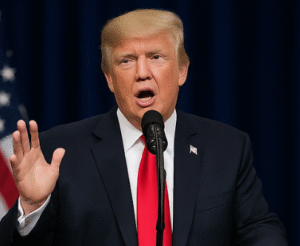$BOND $TBT $TLT
#BondMarket #TrumpRally #USBonds #BorrowingCosts #CorporateDebt #InterestRates #EconomicOutlook #MarketRally #DebtIssuance #Borrowers #FinancialMarkets #EconomicGrowth
Companies are racing to tap into the U.S. bond market, taking advantage of a favorable shift in borrowing conditions catalyzed by the enduring Trump rally. This week alone, corporations have raised over $50 billion in bonds, a clear indicator that many borrowers see the current period as a prime opportunity to secure financing at relatively lower costs. The sharp decline in borrowing rates comes at a critical time when many companies are looking to either service existing debt or acquire new capital for future expansion. As interest rates remain lower, thanks to the rally, these companies are keenly aware of the benefits of securing capital now, well before the market conditions potentially shift once again.
This burst of activity follows a prolonged period of rising bond yields, which had raised financing costs for many companies earlier in the year. However, the Trump administration’s economic policies, particularly those focused on tax cuts and deregulation, have had a positive impact on business sentiment, creating a surge in equity markets and stabilizing interest rates. The reduced borrowing costs are primarily attributable to high demand for U.S. Treasurys, driving yields lower and subsequently making corporate bond issuance more attractive. At the same time, ongoing economic expansion has bolstered investor confidence, leading to a compressed risk premium on corporate bonds.
The collective rush to the bond market may well signal that companies expect this window of opportunity to be narrow. Geopolitical uncertainties and potential macroeconomic shifts could drive interest rates higher in the near future. Even subtle movements by the Federal Reserve on interest rate hikes could have an outsized impact on borrowing costs moving forward, compelling firms to act swiftly before conditions change. The $50 billion raised this week reflects the intensity with which businesses are moving to solidify their financial positions, either through refinancing existing debt at lower rates or by securing additional leverage for growth initiatives.
Looking ahead, the broader market implications of these moves could be far-reaching. Investors, drawn by the lower yields on government bonds, may increasingly look to corporate debt markets for returns, applying downward pressure on spreads. Additionally, increased corporate debt levels pose risks for future sustainability, particularly if interest rates rise sharply. However, in the immediate term, both issuers and investors seem aligned in their optimism about the current economic backdrop, fueling continued market activity in this space. The convergence of lower rates, favorable borrowing conditions, and overall economic confidence supports a bullish outlook for the U.S. corporate bond market, barring any sudden disruptions.







Comments are closed.